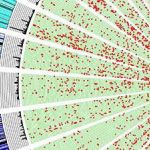
Data Science: Inference and Modeling
Learn inference and modeling: two of the most widely used statistical tools in data analysis.
Gallery
Description
Statistical inference and modeling are indispensable for analyzing data affected by chance, and thus essential for data scientists. In this course, you will learn these key concepts through a motivating case study on election forecasting.
This course will show you how inference and modeling can be applied to develop the statistical approaches that make polls an effective tool and we'll show you how to do this using R. You will learn concepts necessary to define estimates and margins of errors and learn how you can use these to make predictions relatively well and also provide an estimate of the precision of your forecast.
Once you learn this you will be able to understand two concepts that are ubiquitous in data science: confidence intervals, and p-values.
Finally, to understand statements about the probability of a candidate winning, you will learn about Bayesian modeling. At the end of the course, we will put it all together to recreate a simplified version of an election forecast model and apply it to 2016 election.
HarvardX has partnered with DataCamp for all assignments. This allows students to program directly in a browser-based interface. You will not need to download any special software, but an up-to-date browser is recommended.
Note that this course builds upon probability, the previous course in this series.
This course will show you how inference and modeling can be applied to develop the statistical approaches that make polls an effective tool and we'll show you how to do this using R. You will learn concepts necessary to define estimates and margins of errors and learn how you can use these to make predictions relatively well and also provide an estimate of the precision of your forecast.
Once you learn this you will be able to understand two concepts that are ubiquitous in data science: confidence intervals, and p-values.
Finally, to understand statements about the probability of a candidate winning, you will learn about Bayesian modeling. At the end of the course, we will put it all together to recreate a simplified version of an election forecast model and apply it to 2016 election.
HarvardX has partnered with DataCamp for all assignments. This allows students to program directly in a browser-based interface. You will not need to download any special software, but an up-to-date browser is recommended.
Note that this course builds upon probability, the previous course in this series.
Pricing:
Free
Free
Level:
Beginner
Beginner
Duration:
4 weeks, 2h-4h/week
4 weeks, 2h-4h/week
Educator:
Rafael Irizarry
Rafael Irizarry
Organization:
Harvard University
Harvard University
Submitted by:
Coursearena
Coursearena
Reviews
Would you recomment this course to a friend?
Discussion
There are no comments yet. Please sign in to start the discussion.
Other courses you might like





